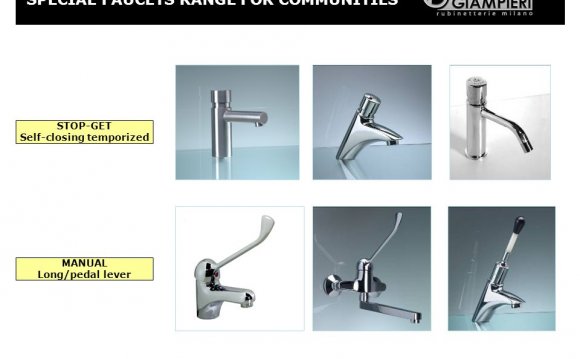
Products for elderly and Disabled
As Baby Boomers age, the need for person care and assisted residing keeps growing. By February 2015, 8.4 million individuals into the U.S. accept help annually from five primary long-term attention service options: home wellness agencies, nursing homes, hospices, domestic care communities, and adult day solution facilities. Outside these services, 43.5 million household and informal caregivers currently provide take care of someone elderly 50+.
The demand for these sources will grow exponentially into the following years due to increased endurance and a the aging process populace. By 2050, how many individuals aged 85 and older is expected to improve to 19.4 million, with people using paid long-term treatment services projected to reach 27 million men and women.
Even one of the most severely disabled older individuals located in our country, about two-thirds depend solely on members of the family for assisted care, usually leading to great mental stress for household caregivers.
We are in need of a far more viable and scalable solution to satisfy this demand. Enter a trend of smart house technology referred to as assistive domotics.
Assistive domotics is an application of residence automation that focuses on enabling elderly or disabled individuals to live at their property in the place of a health care facility. These products use Bluetooth detectors to track motions in the home, or absence thereof, of elderly parents. Detectors may be positioned on anything, including pillboxes, doorways, and keychains. GPS technology papers accurate location information of the individual, logs activity, and reports it to a member of family living someplace else.
The numerous great things about smart homes when it comes to elderly
Empowering older people to call home individually rather than in a grownup care center not merely provides benefits, in addition features great prospective to improve standard of living, lessen the strain on old attention facilities, and offer relief for family caregivers.As Diane Cook, lead specialist at Washington State University’s “Smart Home venture” describes, “Individuals don’t wish to keep their house although they live-in a rural area and do not have comfortable access to health care or family. They still will not keep their family house. Studies show whenever they are doing – especially against their particular will – that move is usually accompanied by intellectual and real drop and death.” Listed here are a few techniques assistive domotics help with separate living for the senior:
- Emergency reaction: currently commonplace, this technology provides a panic switch that immediately informs family or authorities of an emergency, including a fall.
- Eyesight and Hearing: improved alarms on doors, doorbells, smoke detectors, and devices are far more efficient at alerting some one with artistic or hearing impairments about home-related incidents.
- Memory: As psychological sharpness fades with age, forgetfulness can result in serious protection issues. Smart home abilities offer reminders to make off a coffee cooking pot, immediately secure doorways, and even provide reminders to just take day-to-day medication.
- Movie Monitoring: For safety and security, the within and outside the home could be monitored, including remote watching for caregivers living not in the home.
- Prescription help: techniques can dispense specific medications and dosages within precise time they should be taken, even providing hair on other medicines that will never be taken during those times. This capability is specially good for Alzheimer’s patients.
Assistive domotics products begin to penetrate industry
With among these advantages at heart, companies are starting to produce wise residence items to meet the potential of assistive domotics. Some of these items consist of:- Lively: This “smartwatch-esque” item provides instant communications to emergency solutions and contacts aided by the touch of a button. Beyond that, Lively in addition provides medicine reminders, step counting, and day-to-day activity sharing.
- Evermind: Evermind’s sensor technology provides caregivers and the ones living independently the capability to monitor use of home appliances and health gear. For instance, the detectors can keep track of if driven health equipment like breathing products or wound care pumps are now being made use of. In addition it tracks when typical family devices are switched on and down.
- Day to day routine: produced by SmartThings, the Daily Routine software helps caregivers stay connected to senior or handicapped nearest and dearest by sending immediate alerts when they deviate from important daily routines. This includes opening their particular medicine pantry at a designated time or if a caregiver has actuallyn’t appeared for regularly scheduled appointment.
- Slip & Fall: additionally built by SmartThings, the Slip & Fall application tracks motion and sends alerts to caregivers if an ageing relative slips and falls. The app makes use of motion sensors, which may be placed through the residence, to identify movement and send a notification if there is no action for a predetermined time period. With over 2.5 million seniors treated in disaster departments for injuries caused by falls, this technology might help save your self a life.
Despite these notions, a study from Journal of the aging process research indicates that older grownups indeed readily take smart-home technologies, particularly when they benefit in exercise, independency, function, and most notably, if privacy problems tend to be dealt with. Or, while the study poignantly evaluated, “Even though the effects and cost effectiveness of these types of technology remain become examined, they may actually show some possibility of assisting older grownups to call home longer, safely, and by themselves in their own personal houses.”
Mcdougal for this weblog is Tarun Nimmagadda, creator & co-chief executive officer, Mutual Cellphone.













